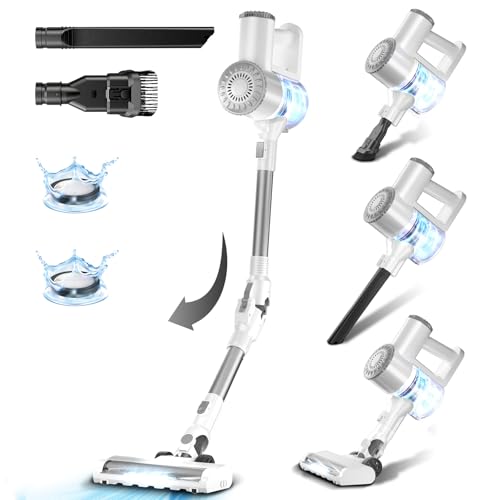
When it comes to cutting metal, many people automatically think of tools like hacksaws or metal shears. However, did you know that you can also use a circular saw for this task?
A circular saw is a versatile tool that is commonly used for woodworking projects, but it can also be used to cut through various types of metal. This makes it a great option for those who work with different materials and need a tool that can handle both wood and metal.
However, there are some important considerations to keep in mind when using a circular saw to cut metal. First and foremost, you will need to make sure you have the right blade for the job. Blades designed specifically for cutting metal will have smaller teeth and a more abrasive edge than blades intended for cutting wood.
Additionally, cutting metal with a circular saw can produce a significant amount of heat and sparks. Therefore, it is crucial to wear appropriate safety gear, such as safety goggles and gloves, to protect yourself from potential hazards. It is also important to have a fire extinguisher nearby, just in case.
In conclusion, while a circular saw can be used to cut metal, it is important to take the necessary precautions and use the right blade for the job. By doing so, you can effectively and safely cut through various types of metal using this versatile tool.
What is a circular saw
A circular saw is a versatile power tool that is commonly used for making straight cuts in various materials, including wood, plastic, and metal. It consists of a cylindrical-shaped blade with teeth around its edge, which rotates at a high speed to cut through the material. The blade is mounted on a motorized base or handle, which provides the necessary power and control to make precise cuts.
One of the main advantages of a circular saw is its ability to make straight, accurate cuts quickly and efficiently. It is commonly used in construction, woodworking, and other industries where straight cuts are required. The circular saw can be used for a wide range of applications, such as cutting lumber, plywood, and other sheet materials.
Components of a circular saw
- Blade: The blade is the most important part of a circular saw. It is available in different sizes and with different types of teeth, depending on the material being cut. Blades for cutting metal usually have carbide-tipped teeth, which are durable and can withstand the high heat generated during the cutting process.
- Motor: The motor is responsible for powering the blade and controlling its speed. Circular saws can have electric motors or gasoline engines, depending on the model and intended use.
- Base Plate: The base plate, also known as the shoe, is the flat metal or plastic surface on the bottom of the saw. It provides stability and support for the saw during use.
- Depth Adjustment: Circular saws usually have a depth adjustment feature that allows the user to set the cutting depth of the blade. This ensures that the saw cuts through the material to the desired depth.
- Guard: The guard is a safety feature that covers the blade when it is not in use. It helps to prevent accidental contact with the blade and can be retracted during cutting.
Using a circular saw
To use a circular saw, it is important to follow some safety precautions. This includes wearing appropriate safety gear, such as safety glasses and hearing protection, and securing the material being cut properly to prevent it from moving during cutting.
Before making any cuts, it is important to ensure that the blade is suitable for cutting the material at hand. For example, when cutting metal, a blade with carbide-tipped teeth designed for metal cutting should be used.
Once everything is set up and ready, the circular saw can be turned on and the blade can be guided along the desired cutting line. It is important to maintain a steady grip on the saw and to apply gentle pressure to guide it through the material. The depth adjustment should be set so that the blade cuts through the material to the desired depth.
In conclusion, a circular saw is a versatile power tool used for making straight cuts in various materials. It consists of a rotating blade mounted on a motorized handle and can be used for a wide range of applications. When using a circular saw, it is important to follow safety precautions and ensure that the appropriate blade is used for the material being cut.
Types of circular saw blades
When it comes to cutting metal using a circular saw, it is important to choose the right type of blade for the job. There are several different types of circular saw blades that are specifically designed to cut through different types of metal. Each type of blade has its own unique features and benefits. Here are some common types of circular saw blades for cutting metal:
1. Steel cutting blades
Steel cutting blades are designed to cut through various types of steel, including mild steel, stainless steel, and hardened steel. These blades are typically made from high-speed steel (HSS) or carbide-tipped material, which allows them to withstand the high heat generated when cutting through metal.
2. Aluminum cutting blades
Aluminum cutting blades are specifically designed to cut through aluminum and other non-ferrous metals. These blades often feature a special tooth geometry that reduces the chance of binding and allows for smoother cuts in softer metals like aluminum. They can also be used for cutting plastic materials.
It is important to note that using the correct type of blade for the specific metal being cut is crucial for achieving the best results. Using the wrong type of blade can lead to ineffective cuts, excessive heat, and premature wear of the blade.
Additionally, it is essential to choose a blade with the appropriate size and number of teeth. Blades with more teeth are generally better suited for making smoother cuts, while blades with fewer teeth are better for cutting thicker sections of metal.
Overall, with the right blade and proper technique, a circular saw can be an effective tool for cutting metal. However, it is important to always follow safety guidelines and wear appropriate protective gear when working with a circular saw.
| Type of Blade | Best Used For |
|---|---|
| Steel cutting blades | Mild steel, stainless steel, hardened steel |
| Aluminum cutting blades | Aluminum, non-ferrous metals, plastic materials |
Safety precautions when cutting metal
When using a circular saw to cut metal, it is important to take several safety precautions to protect yourself and prevent accidents. Metal cutting can be hazardous, so following these guidelines will help ensure a safe and successful project.
1. Wear appropriate protective gear: Before starting any cutting operation, always wear safety glasses or a face shield to protect your eyes from sparks, debris, and metal shavings. Additionally, wear gloves to protect your hands from sharp edges and heat, and hearing protection to minimize noise exposure.
2. Secure the workpiece: Make sure the metal workpiece is firmly secured before making any cuts. This can be done using clamps or a vise to prevent it from moving during the cutting process. Unsecured workpieces can become dangerous projectiles if caught by the blade.
3. Use the appropriate blades: Not all circular saw blades are suitable for cutting metal. Make sure to use a blade specifically designed for metal cutting, such as a carbide-tipped or abrasive blade. Using the wrong type of blade can result in poor cuts or even blade breakage.
4. Set the correct cutting depth: Adjust the cutting depth of the circular saw to match the thickness of the metal being cut. Setting the depth too shallow can cause the blade to bind, while setting it too deep may increase the risk of kickback or damage the workpiece.
5. Take your time and make steady cuts: Cutting metal requires patience and control. Avoid rushing the process and make steady, controlled cuts to maintain accuracy and reduce the risk of the blade slipping or binding.
6. Keep the work area clear: Clear the work area of any clutter or debris that may interfere with your cutting operation. Remove any loose objects or flammable materials to avoid accidents or sparks from igniting potentially hazardous materials.
7. Disconnect the power before blade changes or adjustments: Always disconnect the power source before changing blades or making any adjustments to the circular saw. This will prevent accidental starting and ensure your safety.
| In summary, remember these safety precautions when cutting metal with a circular saw: |
|---|
| – Wear appropriate protective gear |
| – Secure the workpiece |
| – Use the appropriate blades |
| – Set the correct cutting depth |
| – Take your time and make steady cuts |
| – Keep the work area clear |
| – Disconnect the power before blade changes or adjustments |
By following these safety precautions, you can effectively use a circular saw to cut metal while minimizing the risks associated with this type of cutting operation.






